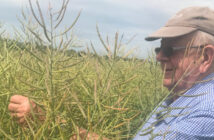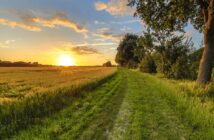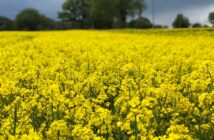Further information on the impact of neonicotinoid seed treatment restrictions on the current winter oilseed rape (WOSR) crop has been issued by AHDB.
A survey, conducted by AHDB, has helped quantify the impact of the restrictions on planting decisions, crop establishment and redrilling.
Plant sampling, conducted by ADAS, has provided an insight into cabbage stem flea beetle (CSFB) larvae levels.
Survey information
The AHDB/HGCA Winter Planting Survey 2014 included a number of additional questions to gather further evidence on the impact of the restrictions.
Over 1,300 WOSR growers, with crops equivalent to 8% of the national area in England and Wales, completed the survey based on planted areas as at 1 December 2014.
Approximately 11% of respondents said they would have planted additional areas of WOSR, if neonicotinoid seed treatments had been available. This was estimated to be equivalent to 38,000ha not planted in England.
Approximately 5.0% of the WOSR area originally planted was reported to have been lost to adult CSFB. About 1.5% of this area was reported to have been successfully replanted. The remaining 3.5% was estimated to be equivalent to 22,000ha lost in England.
The estimates of adult CSFB WOSR losses are slightly higher than those reported in the HGCA-funded snapshot assessment which was based on crop losses at the end of September 2014. At this time, the crop loss estimate was 2.7% (18,000ha).
The main AHDB/HGCA Winter Planting Survey findings, published in March, estimated the WOSR area to be 0.633M ha as at 1 December representing a relatively small drop (1%) from the total area of oilseed rape (both winter and spring varieties) harvested in 2014.
Caroline Nicholls, AHDB Research Manager, said: “According to the latest survey results, we estimate that if neonicotinoid seed treatments had been available, the area that might have been planted would have been equivalent to a 5% increase over the area harvested in 2014.”
Plant sampling
To take account of CSFB damage after 1 December 2014, further research was commissioned to investigate CSFB larval populations in seven of the worst affected counties (as identified in the snapshot assessment).
In Bedfordshire, Cambridgeshire, Hampshire, Hertfordshire, Northamptonshire, Suffolk and Surrey, 25 random plants were taken from two sites during 17-26 February 2015 – one which had a ‘high’ and one which had a ‘low’ adult CSFB pressure.
In total, fourteen sites were sampled and petioles and stems were dissected at ADAS laboratories to determine average larvae numbers at each site.
The sampling revealed variation in larval counts across counties. Eight of the sites were above the published spray treatment threshold of five larvae per plant – five of these were high-pressure sites.
All sites were found to contain less than an average of 10 larvae per plant, with the exception of the high-pressure site in Cambridgeshire.
At this site, larvae averaged 28 per plant, with one plant containing 59 larvae (57 of which were located in the leaf petioles).
These findings follow the publication of the ‘spring assessment’ results by the Food and Environment Research Agency (Fera).
Miss Nicholls said: “The Fera spring assessment results were based on 25 plants taken across 50 sites and found a national average of 1.4 larvae per plant.
“The average in our study was 6.6 larvae per plant but, as we focused on the worst affected counties, this higher figure is not surprising.
“These are interim project results and the WOSR located at the sites will be taken to yield to help improve our understanding of the relationship between CSFB pressures and yield impacts.”
Led by ADAS, Project 2140025 Cabbage stem flea beetle larval survey started in January 2015 and will finish in October 2015.
For further information, including the AHDB/HGCA Winter Planting Survey 2014 neonicotinoid impact report, visit www.hgca.com/neonics



